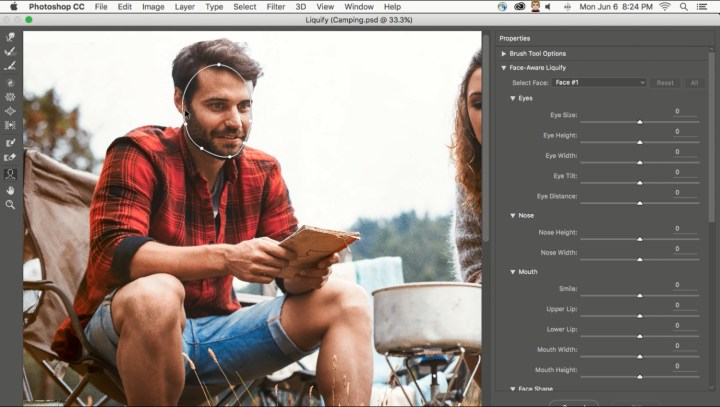
The Liquify tool itself is old news, having been used for years as a way to to change the shape of things (usually people) in an image. The new face-aware technology, however, makes it easier than ever to do it. Liquify now automatically recognizes different features of a person’s face, including the eyes, nose, and mouth (as well as the entire face as a whole). Using control points overlaid on the image, or sliders in the sidebar, users can instantly increase the size of a subject’s eyes, shed a few pounds from his or her face, or turn that frown upside down.
Related: Adobe’s new crop tool can intelligently fill in backgrounds
Just how easy it is? Well, if this demo from the Photoshop Training Channel (via PetaPixel) is to be believed, it’s very easy. In fact, some may call it too easy. In the video, which is only about 7 minutes long, instructor Jesus Ramirez goes over every detail of the new feature, even showing how individual facial features can be completely repositioned on someone’s face. Need a droopy, zombie-esque eye? No problem. He also applies the tool to video, which offers a whole new level of creepy realism.
Tools like this have a variety of uses, but the most obvious one seems to be the enhancement of physical attributes, which is perhaps the politically correct way of saying, “making people look prettier.” This 2006 video from the Dove Real Beauty campaign comes to mind.
Face-aware Liquify doesn’t change what Photoshop is capable of, but it would seem that it makes it even easier to create an image that portrays an unrealistic standard of beauty. That may annoy some people, but keep in mind, it also provides for hours of fun creating ridiculous edits of your friends’ Facebook profile pictures.
Just remember, with great power comes great responsibility.
Editors' Recommendations
- How to add and edit text in Adobe Photoshop
- What is Photoshop Camera? How Adobe’s new A.I. app edits photos before you take them
- Gmail will now share your Photoshop and Lightroom photos with a built-in tool
- Adobe releases Photoshop from desktop cage with new iPad app — and more to come
- Luminar’s A.I. tools expand for Photoshop, Lightroom via updated plug-in



